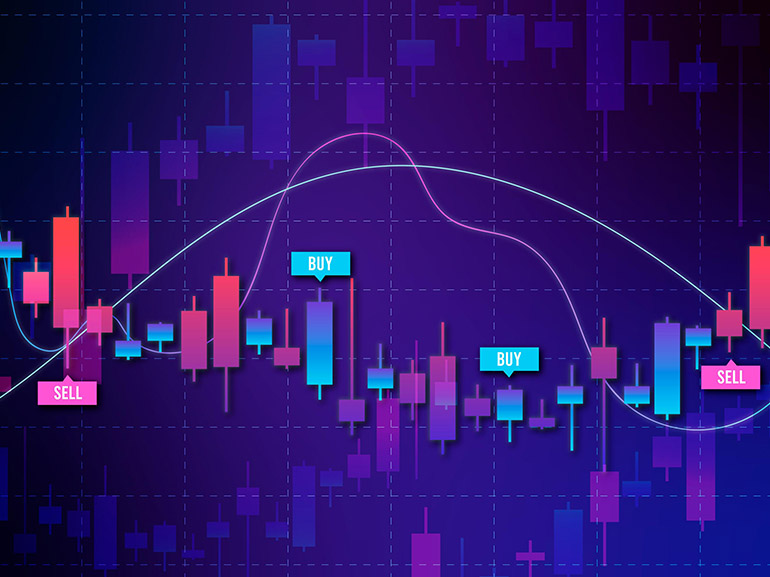Quantitative Easing (QE) Explained: What It Is & How It Works
Quantitative easing (QE) is a pivotal monetary policy tool employed by central banks to invigorate an economy, particularly when conventional methods, such as adjusting short-term interest rates, prove insufficient. By orchestrating large-scale purchases of financial assets, predominantly government bonds, central banks infuse significant liquidity into the financial system. The primary objectives are to drive down long-term interest rates, incentivise lending, and foster investment to stimulate broader economic activity.

Definition: QE is a non-traditional monetary policy where central banks buy financial assets (like government bonds) to increase the money supply, lower interest rates, and boost economic activity during downturns.
Core Purpose: To reduce long-term borrowing costs, encourage lending by commercial banks, and support overall economic growth, especially when short-term interest rates are already near zero.
Mechanism: Central banks purchase vast amounts of securities from commercial banks, increasing bank reserves, driving down bond yields, and stimulating credit creation.
Key Benefits: Promotes economic growth, combats deflation pressures, stabilises financial markets, and can lead to currency depreciation, making exports more competitive.
Potential Risks: Carries the risk of inflation, contributing to asset price bubbles, potentially exacerbating income inequality, and may face diminishing returns over prolonged periods.
Understanding the Fundamentals of Quantitative Easing (QE)
Quantitative easing comes into play when traditional monetary policies, such as the manipulation of short-term interest rates (e.g., the federal funds rate in the U.S.), reach their limits, often when these rates are already at or near zero. In such "liquidity trap" scenarios, central banks pivot to purchasing long-term securities. This aims to:
Increase the Money Supply: By buying assets, central banks essentially create new money (digital reserves) that flows into the financial system.
Lower Long-Term Interest Rates: The increased demand for these long-term bonds pushes up their prices, which, in turn, drives down their yields (interest rates). This makes borrowing cheaper for businesses and consumers.
Encourage Lending and Investment: With more money in the system and lower borrowing costs, banks are more inclined to lend, and businesses and individuals are more likely to take out loans for investments and spending, thereby stimulating demand and economic growth.
How Quantitative Easing (QE) Works Step-by-Step
The process of quantitative easing unfolds through several interconnected stages:
Large-Scale Asset Purchases: The central bank initiates a program to buy substantial quantities of specific financial assets from the open market. These commonly include:
Government Bonds: Sovereign debt securities issued by the national government (e.g., U.S. Treasuries, UK Gilts).
Mortgage-Backed Securities (MBS): These are debt obligations that derive their value from the cash flows of underlying mortgage loans. Central banks sometimes purchase these securities as part of quantitative easing to provide support to the housing market.
Increase in Commercial Bank Reserves: When the central bank purchases these assets, it credits the reserve accounts of the commercial banks from which it bought the securities. This dramatically increases the amount of money these banks hold in their reserve accounts at the central bank.
Downward Pressure on Interest Rates: The increased demand from the central bank for bonds drives up their market prices. As bond prices rise, their effective yields (the return an investor gets) fall. This directly translates to lower long-term interest rates for various loans, from mortgages to corporate bonds.
Stimulated Lending, Investment, and Spending: With lower borrowing costs, businesses find it cheaper to finance expansion, hire more staff, and invest in new projects. Consumers benefit from lower mortgage rates and other loan costs, encouraging them to spend more. This collective increase in economic activity aims to prevent deflation and foster GDP growth.
Historical Applications of Quantitative Easing (QE)
QE has become a prominent tool in the aftermath of major economic crises, demonstrating its global application:
United States
2008 Financial Crisis: The Federal Reserve (Fed) implemented multiple rounds of QE (QE1, QE2, QE3) starting in late 2008 in response to the Great Recession. They purchased over $4 trillion in assets, including Treasury securities and mortgage-backed securities, aiming to stabilise financial markets, unfreeze credit, and stimulate recovery.
COVID-19 Pandemic (2020): Faced with unprecedented economic shutdowns, the Federal Reserve reactivated its quantitative easing (QE) program. During the pandemic, the Federal Reserve implemented large-scale purchases of Treasury and mortgage-backed securities. This quantitative easing strategy aimed to inject liquidity into financial markets, sustain the availability of credit, and mitigate significant negative economic impacts. (Source: Forbes)
United Kingdom
2009 Global Financial Crisis: The Bank of England (BoE) initiated its QE program in March 2009. The primary goal was to combat the severe economic downturn by purchasing government bonds (Gilts) to lower interest rates and boost aggregate demand.
Post-Brexit & COVID-19: The program was expanded significantly in subsequent years, notably following the Brexit referendum and again during the COVID-19 pandemic, reflecting ongoing economic challenges and the need for continued stimulus.
Eurozone
2015 Sovereign Debt Crisis & Low Inflation: The European Central Bank (ECB) launched its comprehensive Asset Purchase Programme (APP) in 2015. This was in response to persistent low inflation, weak economic growth, and the lingering effects of the sovereign debt crisis. The ECB's purchases of government bonds and other assets aimed to lower borrowing costs across the euro area and support economic activity in its diverse member states.
Benefits of QE
Economic Stimulus: By lowering interest rates, QE encourages borrowing and investment, supporting economic growth.
Preventing Deflation: Injecting liquidity helps counteract deflationary pressures during economic downturns.
Financial Market Stability: Asset purchases can stabilise financial markets by providing liquidity and reducing volatility.
Currency Depreciation: QE can lead to a weaker currency, making exports more competitive internationally.
Risks and Criticisms of QE
Inflation Risk: An excessive increase in the money supply could lead to higher inflation if not managed properly.
Asset Bubbles: Prolonged low interest rates may inflate asset prices, creating bubbles in markets like real estate and stocks.
Income Inequality: Rising asset prices tend to benefit wealthier individuals, potentially widening the wealth gap.
Diminishing Returns: Over time, the effectiveness of QE may decrease, requiring larger interventions for the same impact.
Conclusion
Quantitative easing is a powerful monetary policy tool used by central banks to support economies during periods of financial stress. While it has been effective in stimulating growth and preventing deflation, it also carries risks that require careful management. Understanding QE's mechanisms, benefits, and potential downsides is crucial for comprehending modern economic policy.
FAQs
Is Quantitative Easing (QE) the same as printing money?
While QE does involve the central bank creating new reserves to purchase assets, it's distinct from traditional 'money printing' that directly increases physical cash in circulation. QE creates digital reserves that flow within the banking system, aiming to encourage lending, not directly put cash into everyone's pockets. The impact on the broader money supply is indirect.
How does QE affect interest rates?
When a central bank buys large quantities of long-term bonds, it increases the demand for those bonds. Increased demand drives up bond prices. As bond prices rise, their yields (the return on the bond, which is inversely related to price) fall. These lower bond yields translate directly to lower long-term interest rates for various loans, including mortgages, auto loans, and business investments.
Can QE lead to inflation?
QE carries the risk of inflation if the increased money supply and liquidity injected into the economy significantly outpace the growth in the production of goods and services. However, central banks carefully monitor inflation metrics and typically have tools (like raising interest rates or quantitative tightening) to manage and withdraw liquidity if inflationary pressures become too strong. The post-2008 experience showed that inflation remained subdued for many years, while recent events have shown that it can be a significant risk.
Who are the primary beneficiaries of Quantitative Easing (QE)?
Investors and asset holders (e.g., those with significant stock portfolios or real estate investments) often benefit most directly from QE due to rising asset prices. Companies can also benefit from lower borrowing costs. The broader economy is intended to benefit through increased employment and economic activity stimulated by cheaper credit, but the distribution of these benefits can be uneven.
What happens when QE ends?
When QE ends, central banks typically enter a phase known as Quantitative Tightening (QT). During QT, the central bank gradually reduces the size of its balance sheet by either - Allowing maturing bonds to expire without reinvesting the proceeds. Actively selling assets back into the market. This process reduces the money supply, can lead to higher long-term interest rates, and aims to normalise monetary policy. The exit strategy needs to be carefully managed to avoid market disruption.






